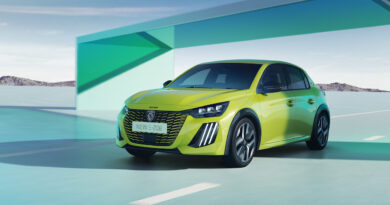Government rules out subsidies for EVs
The government has issued a discussion paper outlining Australia’s Future Fuels Strategy, and the headline news in terms of subsidies for consumers to buy EVs and PHEVs is that… there won’t be any.
Whatever you think of the electric-vehicle-uptake policies of Australian authorities, you’d have to call them unique. Not in the way that Norway’s approach is unique – an approach that sees two thirds of new cars sold in that country being electrified – but more as an outlier.
Ours is a a government that points out, proudly, that some people are already making the choice to switch to new technologies when it makes economic sense, but that it’s going to do as little as possible to help them with that.
Other countries, lots and lots of them, offer taxpayer subsidies to encourage people to buy PHEVs and EVs, the Morrison government has ruled that idea out, because it wouldn’t represent value for money. So, California, Norway, all of Scandinavia in fact, England – you’re all wrong.
No, our government’s genius idea is to get businesses to pay for the switch, and spend the money, by encouraging them to invest in EV and PHEV fleets, which will then, eventually, and theoretically, flood the second-hand market with those cars at prices little people can afford.
Can you say “trickle-down economics”? Somewhere Ronald Reagan is sleeping happily in his ornate casket.
This is the centre plank of the Government’s long-awaited emissions strategy, announced today by Energy Minister Angus Taylor, although it sounds very much like Scotty From Marketing, who likes the sound of a “fleet first” strategy because it reminds him of those poor battlers on the First Fleet.
Taylor says they are aiming for a “planned and managed” transition to low-emission cars, which is ministerial speak for “low and slow”. He also suggested we can’t afford to move too quickly because our national energy grid and our charging infrastructure – the same infrastructure his government has largely failed to invest in – can catch up.
The government has issued a discussion paper outlining its Australia’s Future Fuels Strategy, which focuses on commercial fleets, infrastructure and improving information given to car buyers.
Taylor also suggested that the problem of EV vehicles being more expensive could just fix itself, without the government putting money in our pockets to help.
“We are optimistic about how quickly the technology cost will reduce for other electric vehicles compared to traditional cars, making it an easier choice for consumers,” Taylor said.
The strategy document suggests that focusing on fleets makes sense because those cars travel further than private vehicles, thus delivering better value for money. And when they’re clapped out with 200,000km on the clock, we can get them on the cheap.
“Supporting commercial fleet investment in new vehicle technologies will also drive uptake from private users, as fleet vehicles are generally replaced more regularly than private vehicles,” the plan says.
“This benefits the second-hand market and provides private consumers with second-hand vehicles at lower prices.”
In short, we can’t have nice things, like other countries can, because that would cost the government money.
Taylor also used terms like “consumer choice” and “natural uptake”, both of which ignore words like “EVs cost too much in this country and rather than incentivising people to buy them state governments want to hit them with new and extra taxes”.
Electric Vehicle Council chief executive Behyad Jafari has previously criticised the federal government for being behind other leading economies
“In the US, drivers are offered a $10,000 tax rebate for buying an electric vehicle, and American consumers get access to much cheaper electric vehicle options because of their long-standing vehicle emission standards,” he said.




